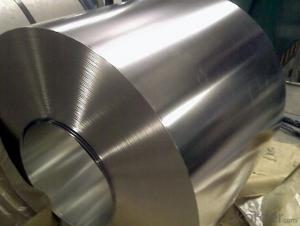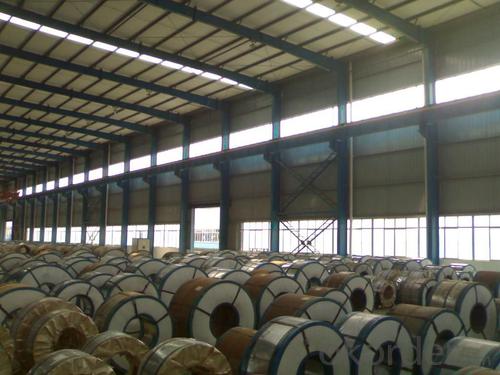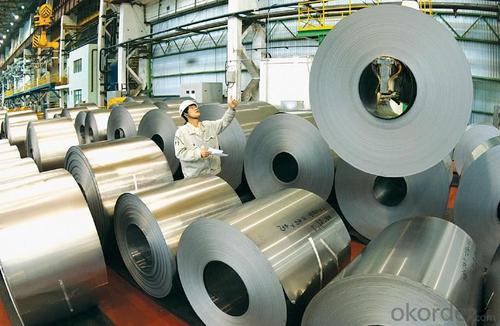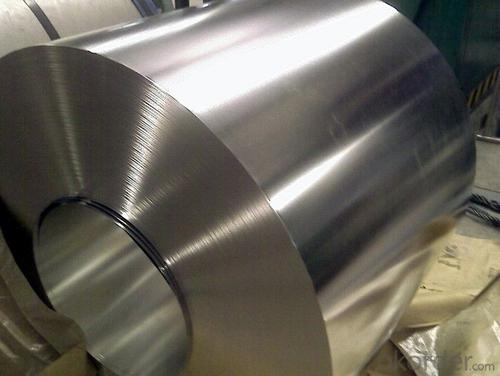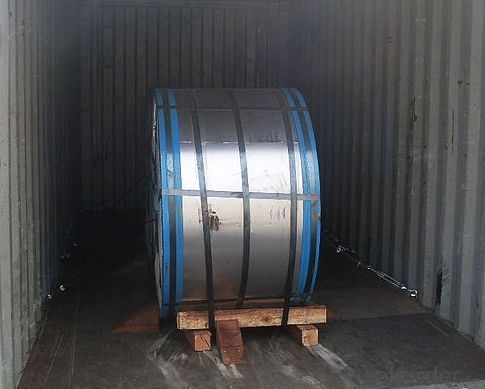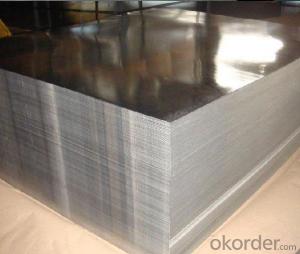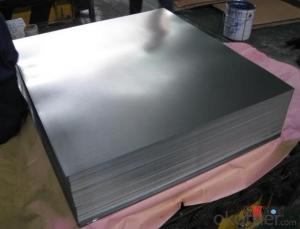Electrolytic Tinplate Coil for Foods and Chemical Cans Packing
- Loading Port:
- Tianjin
- Payment Terms:
- TT OR LC
- Min Order Qty:
- 25 m.t
- Supply Capability:
- 7000 m.t/month
OKorder Service Pledge
OKorder Financial Service
You Might Also Like
1.Structure of Electrolytic Tinplate Coil for Foods and Chemical Cans Packing Description
Electrolytic Tin Plate Coils and Sheets for Foods Metal Packaging, is one thin steel sheet with a coating of tin applied by electrolytic deposition. Tinplate made by this process is essentially a sandwich in which the central core is strip steel. This core is cleaned in a pickling solution and then fed through tanks containing electrolyte, where tin is deposited on both sides. As the strip passes between high-frequency electric induction coils, it is heated so that the tin coating melts and flows to form a lustrous coat.
2.Main Features of the Electrolytic Tinplate Coil for Foods and Chemical Cans Packing
Appearance – Electrolytic Tin Plate is characterized by its beautiful metallic luster. Products with various kinds of surface roughness are produced by selecting the surface finish of the substrate steel sheet.
Paintability and printability – Electrolytic Tin Plates have excellent paintability and printability. Printing is beautifully finished using various lacquers and inks.
Formability and strength – Electrolytic Tin Plates have got very good formability and strength. By selecting a proper temper grade, appropriate formability is obtained for different applications as well as the required strength after forming.
Corrosion resistance – Tinplate has got good corrosion resistance. By selecting a proper coating weight, appropriate corrosion resistance is obtained against container contents. Coated items should meet 24 hour 5 % salt spray requirement.
Solderability and weldability – Electrolytic Tin Plates can be joined both by soldering or welding. These properties of tinplate are used for making various types of cans.
Hygienic – Tin coating provides good and non toxic barrier properties to protect food products from impurities, bacteria, moisture, light and odours.
Safe – Tinplate being low weight and high strength makes food cans easy to ship and transport.
Eco friendly – Tinplate offers 100 % recyclability.
Tin is not good for low temperature applications since it changes structure and loses adhesion when exposed to temperatures below – 40 deg C.
3.Electrolytic Tinplate Coil for Foods and Chemical Cans Packing Images
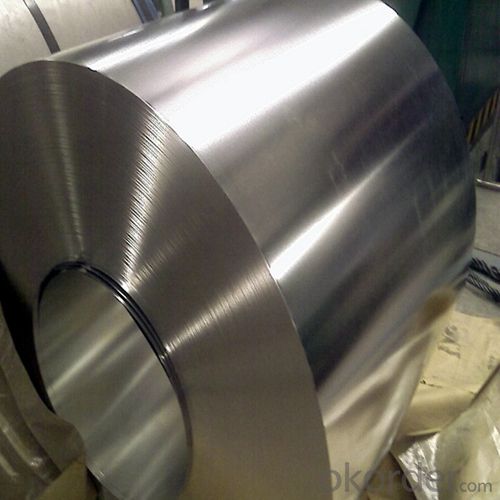
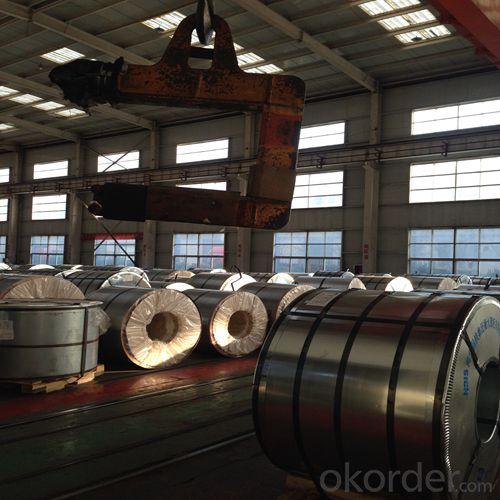
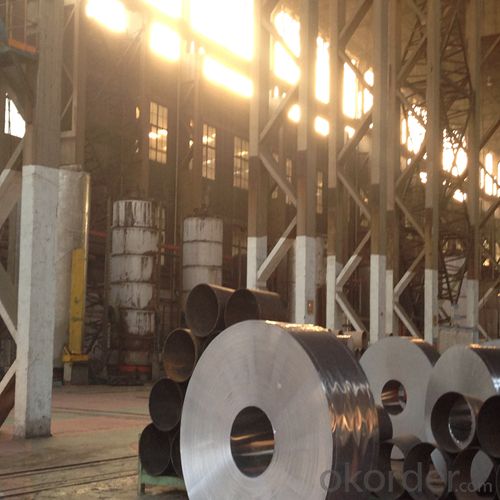
4.Electrolytic Tinplate Coil for Foods and Chemical Cans Packing Specification
Standard | ISO 11949 -1995, GB/T2520-2000,JIS G3303,ASTM A623, BS EN 10202
|
Material | MR,SPCC |
Thickness | 0.15mm - 0.50mm |
Width | 600mm -1150mm |
Temper | T1-T5 |
Annealing | BA & CA |
Coil Inner Diameter | 508mm |
Weight | 6-10 tons/coil 1~1.7 tons/sheets bundle |
Passivation | 311 |
Oil | DOS |
Surface | Finish,bright,stone,matte,silver |
5.FAQ of Electrolytic Tinplate Coil for Foods and Chemical Cans Packing
-What your tinplate material is used for ?
Tinplate is widely used for the packaging of products. Such as food cans,
beverage cans, pet cans, closures, general line cans and so on.
Printed Tinplate is offered!!
-How to place .an order or contact you ?
Please send us Email. we will give you a quick response in seconds .
- Q: How is tinplate coated for electrical enclosures?
- Tinplate is commonly coated for electrical enclosures through a process called electroplating, which involves immersing the tinplate into an electrolyte solution and applying an electric current. This causes tin ions to be deposited onto the surface of the tinplate, creating a thin and protective layer of tin coating.
- Q: How does tinplate perform in terms of stackability?
- Tinplate performs exceptionally well in terms of stackability. Its rigid and durable nature allows for easy stacking without compromising the structural integrity of the stack. Additionally, the smooth surface of tinplate ensures that stacked items do not shift or slide, further enhancing its stackability.
- Q: What is tin plate?
- Tin plate, also called tin plated steel plate, is formed by tin plating on the base material of the sheet steel. Sheet steel substrate with low carbon steel as raw material, its thickness is generally 0.1 ~ 0.4mm.Tin plate according to its tin plating process can be divided into two types, namely hot dipped tinplate and galvanized tinplate.
- Q: Is tinplate resistant to scratches and dents?
- Yes, tinplate is resistant to scratches and dents.
- Q: What are the main components of tinplate?
- The main components of tinplate are steel and a thin layer of tin coating.
- Q: Cookies with tinplate packaging has what advantage
- 1. good mechanical properties: tinplate cans relative to other containers, such as plastic, glass, paper containers and strength, and good rigidity, it is not easy to break. It is not only used for small sale packing, but also the main container for large transportation package. 2. excellent barrier: Tin than any other...
- Q: How do you clean the dust and trace oil on tin containers?
- Water based cleaning method: that is, with clean water and cleaning agent to remove oil method, the use of water washing process. This process started relatively late in the country, and the technical strength of various manufacturers formula is uneven, of which the more representative of public praise is "evergreen peak" brand CLF water-based cleaning agent series.
- Q: What are the different types of tinplate printing techniques?
- The different types of tinplate printing techniques include offset lithography, screen printing, and digital printing.
- Q: What are the challenges in printing on tinplate?
- Some of the challenges in printing on tinplate include the limited adhesion of ink to the smooth surface of tin, the need for specialized inks and printing techniques to ensure durability and resistance to scratching or fading, and the potential for contamination or damage to the tinplate surface during the printing process. Additionally, achieving precise color matching and maintaining consistent print quality can be challenging due to the reflective nature of the tin surface.
- Q: How is tinplate affected by extreme temperatures?
- Tinplate is minimally affected by extreme temperatures due to its high melting point and excellent heat resistance properties. It remains stable and does not undergo significant changes in its physical or chemical properties even in extremely hot or cold conditions.
Send your message to us
Electrolytic Tinplate Coil for Foods and Chemical Cans Packing
- Loading Port:
- Tianjin
- Payment Terms:
- TT OR LC
- Min Order Qty:
- 25 m.t
- Supply Capability:
- 7000 m.t/month
OKorder Service Pledge
OKorder Financial Service
Similar products
Hot products
Hot Searches
Related keywords


